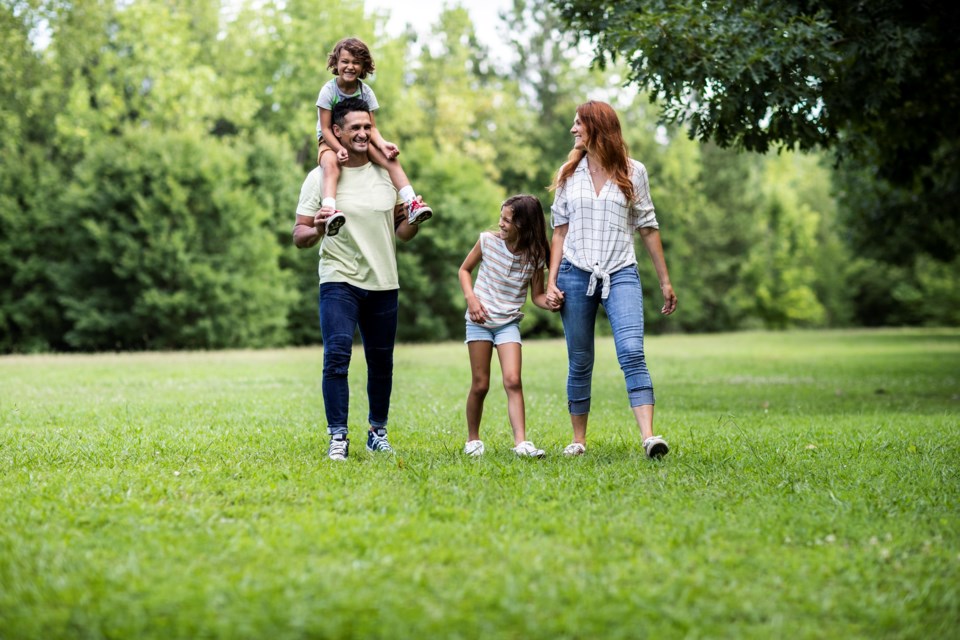For many cities in the world, a green space close to an apartment complex might sound like a luxury. But according to researchers, living near urban parks, forests or a mountain trail could significantly improve your health, lower the chance of chronic disease, and even help children reach key developmental milestones.
Studies have shown that spending time in nature increases physical activity, fosters social cohesion, and reduces the risk of various conditions such as cardiovascular disease and dementia.
The density of trees in green spaces can also provide a buffer against extreme heat made worse by climate change. In a well-treed neighbourhood, trees have been found to cool urban environments by as much as seven degrees Celsius. And in the winter, those same trees help reduce heating bills in the winter.
The effects of nature can also be more subtle, only appearing after years of deprivation.
Green spaces improves changes of hitting childhood milestones, lowers chances of ADHD
For two decades, researchers from the University of British Columbia (UBC) followed nearly 30,000 children across Metro Â鶹´«Ã½Ó³»to track how living near green spaces impacts their health.
In , they found the closer one lived to green spaces, the better chance they had of reaching milestones in emotional maturity, language skills, and general knowledge. The presence of vegetation and natural environments helped mitigate the negative effects of air and noise pollution, which have been linked to stress, sleep disturbances, and damage to the central nervous system in children.
Another parallel Metro Â鶹´«Ã½Ó³»study found the less air pollution and more green space a child is exposed to, the less likely they are to develop attention-deficit hyperactivity disorder (ADHD).
Using satellite imaging, the UBC researchers tracked children who faced different exposures to noise and fine particulate matter related to traffic pollution.
Seven years later, noise was found to have no effect. But lower the amount of green space or increase the levels of air pollution, and the twin effects can heighten the risk of ADHD by up to 62 per cent, found researchers. They concluded children living in greener neighbourhoods with low air pollution had substantially lower risk of ADHD.
Prescribed green space as a medical intervention
Climate distress has pushed some in B.C. to attempt , and researchers worry that for every degree of temperature rise, rates of will only go up.
In response, doctors in B.C. are among the first to Others have looked to green spaces as the solution and have built a national network empowering doctors to prescribe nature as a treatment for anxiety and mental health problems.
In 2022, Parks Canada said it was joining the known as PaRx, or , which aims to get patients into nature for a minimum of two hours per week. Whether in a forest, at a lake or digging your hands into a garden, what matters, say experts, is that patients feel like they have had an experience in nature.
Big gaps in who has access to nature
Despite the numerous benefits of green spaces, their distribution across many Canadian cities reveals significant inequalities.
In 2022, a analyzing 12 Canadian cities found urban trees and their cooling effects are more concentrated in rich, white neighbourhoods.
Nearly every city followed the same pattern: the more people of colour and lower the income, the fewer trees stand in a given city neighbourhood.
Richmond stood out among B.C. cities with a 12 per cent tree canopy cover — the second lowest of all the cities measured.
At eight per cent, Calgary was found to have the lowest of any large Canadian city — a phenomenon made even worse on the west side of the city, where relatively racialized neighbourhoods have been built on natural grasslands unsuitable for planting trees.
The results can be deadly: during the 2021 North American heat wave, more deaths occurred in low-income areas with limited access to green spaces.
Many solutions are out there
As Canadian cities continue to grow, green spaces will play a key role in maintaining people's health.
Nature Canada suggests planners adopt a "3-30-300" rule: make sure everyone can see at least three trees from their homes, every neighbourhood has at least 30 per cent tree canopy cover, and citizens can access a green space within 300 metres of their residences.
Until then, the UBC researchers suggest parents work to incorporate nature into children's daily lives. They recommend visiting nearby parks as a way to establish "micro-contacts" with nature.
They also urge parents to advocate for urban policies that prioritize tree planting and the creation of green spaces in their communities.


